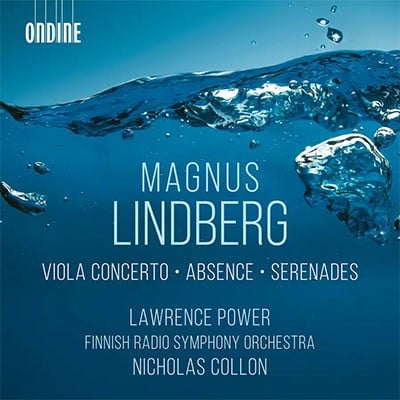2.2.2.2-2.2.0.0-strings
Abbreviations (PDF)
Boosey & Hawkes
After having written two cello concertos (1999 and 2013) and two violin concertos (2006 and 2015), I thought for many years about composing a Viola Concerto. The instrument has played an important role in classical music, defining to a large extent the mid-register textures of different characters from ‘allegro’, ‘andante’, ‘adagio’, ‘presto’ etc., but it has enjoyed less prominence as a solo instrument. Yet the instrument is enormously rich, thanks to its different expressive modes, possessing a huge variety of possibilities.
I wanted to write a big concerto for the instrument, but decided to use a classical orchestra with double wind instruments and strings only. In this work, even the timpani doesn’t become part of the sound palette. Nor is there any other percussion, harps or keyboard instruments. In this way the concerto follows the line of my Violin Concerto No.1 which I scored for a ‘Mozart’-sized orchestra.
The piece is divided into three movements which are played without pauses in between, thus sharing all the material. I work with a large number of different characters, all identified by different harmonies, tempi and textures, drawing parallels with the course of my Piano Concerto No.3.
This pair of concertos also shares an important harmonic feature – the incorporation of pentatonic harmonies within my language. The majority of my works, ever since the early nineties, have been based on a hybrid model combining ‘combinatorial’ pitch material with ‘spectral’ harmonies. Spectral harmonies, in my case, have mainly been based on chords respecting the natural overtones, thus creating a clear distinction between the bass line and the high register. SATB - soprano, alto, tenor, bass - the universal basis of the different voices, roles assumed by the different instruments in a classical orchestra, very much mark out the territory of how my harmonies behave. For me the bass has so often provided the sense of gravity in my music. With pentatonic harmonies my fascination has been the ‘anti-gravity’ sensation that is created. The music of Mussorgsky and, to an even larger extent, the music of Debussy and Ravel clearly opened up ways to move forwards from traditional tonal language, leading to Alban Berg and beyond.
I have often spoken about my way of working with musical material as an ‘extended Sonata form’. Rather than working with the contrasting difference between a main theme and a secondary theme, I typically have a collection of characters, with various degrees of contrast between them. These characters follow each other in a whirlpool-like rapid manner, often giving the music a kaleidoscopic nature. This then undergoes a process of clarification towards more uniform expressions, employing a multitude of different techniques: filtering, diluting, variations, metamorphoses, developments etc.
The concerto is dedicated to Lawrence Power. He is a musician I truly admire.
I am immensely grateful to the Finnish Radio Symphony Orchestra with whom I've been working for more than 40 years and to Karolina Blåberg for having made this project a reality.
Magnus Lindberg, 2024
"The wondrous aspect of Lindberg’s creation was that underneath its hyperactive surface it was still possible to spot some conventional musical scaffolding: phrases and intervals that kept recurring or mutating, or overblown gestures that might have toppled off from something by Richard Strauss"
The Times
"The traditional three-movement form of a concerto lies behind it, with the main sections signalled by brass fanfares, though that fast-slow-fast scheme is punctuated by a skittering interlude and two cadenzas, in the second of which Power sings along to his own strummed accompaniment. The solo writing is fiercely challenging, its orchestral counterpart sometimes deliciously intense; it’s an instantly attractive, strikingly communicative work."
The Guardian

Lawrence Power, viola /
Finnish Radio Symphony Orchestra / Nicholas Collon
Ondine ODE1436-2

